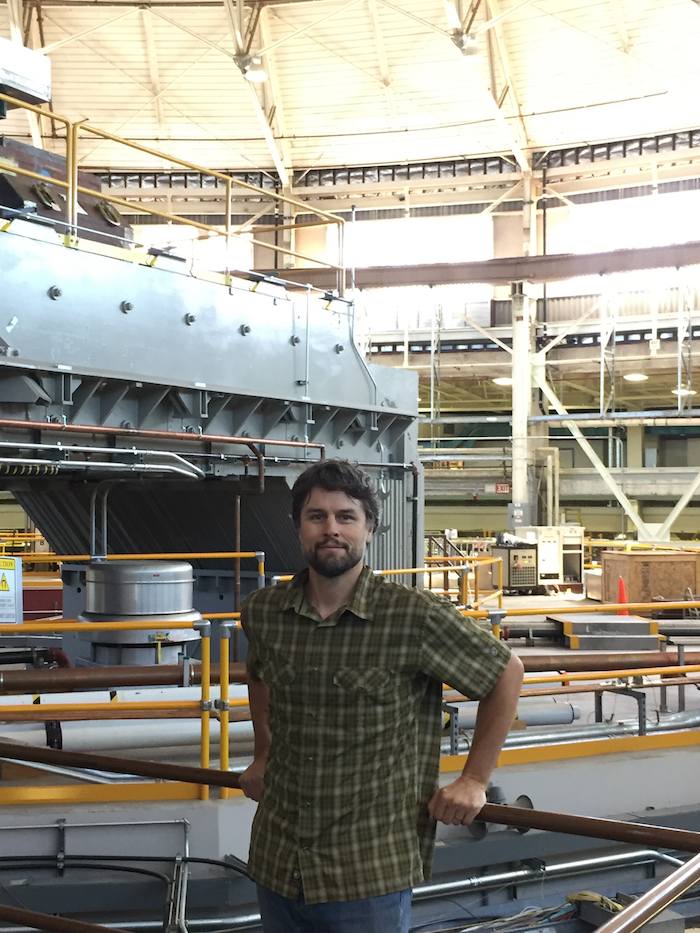 As operations supervisor at the ALS, Tom Scarvie works with the accelerator operators and floor operators to make sure that the machine runs as well as possible and that beamline work is done safely and according to policy. The operations team strives to make sure the ALS is running reliably and at top quality all the time. Scarvie is also one of three chairs of the ALS Beamline Review Committee and he chairs the Accelerator Review Committee.
As operations supervisor at the ALS, Tom Scarvie works with the accelerator operators and floor operators to make sure that the machine runs as well as possible and that beamline work is done safely and according to policy. The operations team strives to make sure the ALS is running reliably and at top quality all the time. Scarvie is also one of three chairs of the ALS Beamline Review Committee and he chairs the Accelerator Review Committee.
What is a typical day like for you?
I am a member of the ALS Accelerator Physics Group, and our main goal is to ensure high-quality operations at the ALS to enable the best science possible. We’re always trying to keep the beam stable in size, trajectory, and current, and I help create and maintain the computer algorithms that control and monitor all of these aspects of the beam. I’m also one of the main points of contact for questions about beam quality. We encourage users and beamline staff to come to the control room with questions about the accelerator and if they have problems with beam quality, as often beamlines are some of the best diagnostics we have to monitor beam quality.
Did you always want to work in accelerator operations?
When I was in college, I had no idea that this type of job even existed. I did always want to be an engineer; I had a grandfather who was a civil engineer and he fostered my interest in the field. While earning a bachelor’s degree in materials science and engineering from UC Berkeley, I happened to take an x-ray physics elective course that included a tour of the ALS, which opened my eyes to the world of big science. I started in an accelerator operator position at the ALS back in 1996, and then got more involved with the physics group as I learned more about the machine.
What has kept you at the ALS all these years?
The technology involved in running the ALS, the constant creative troubleshooting, and the spectacular and fun physics involved in controlling relativistic beams all keep me coming back for more. There’s also a huge satisfaction that comes from enabling world-class science. It’s really a privilege to work here, because it’s one of a few places in the world that’s so productive scientifically, and so in demand. The pride that everyone takes in what they do here is obvious and motivating.
What are some of the biggest challenges of your job?
When we do have failures or problems, it is challenging to balance the pressure to fix things as fast as possible with the need to understand and fix the root causes of trouble. The decisions involved in finding that balance are falling more in my lap as I’ve taken on more of a supervisory role. Being effective under the pressure of 40 different research teams that are maybe only here for a few days is huge, and maintaining the necessary performance with equipment that can be 20 years old in some cases is another big challenge. Poor quality beam can be just as bad for the experimenters as no beam, so it’s very important that we maintain the quality of operations.
What do you do outside of work to decompress?
I really enjoy cycling, skiing, hiking, and just being outside in nature with my family. My wife and I have two young boys, ages 2 and 4, and a dog. We are also new beekeepers and soon we’ll have chickens as well, so we keep very busy.